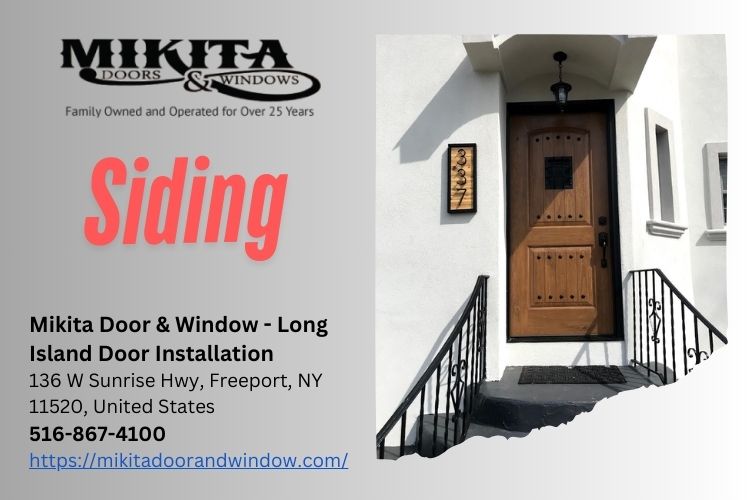Introduction
When undertaking a door installation project, the excitement of transforming your entrance can quickly meet the reality of local regulations and permits. Understanding these legalities is essential for ensuring that your project proceeds smoothly and conforms to local building codes. This article, titled "Navigating Local Regulations and Permits for Your Door Installation Project," will serve as your comprehensive guide to what you need to know before commencing this essential home improvement task.
Mikita Door & Window - Long Island Door Installation
Contact Us
- Address: 136 W Sunrise Hwy, Freeport, NY 11520, United States Phone: Call Us: (516) 867-4100
Understanding Local Regulations for Door Installations
What Are Local Building Codes?
Local building codes are regulations set by governmental authorities to ensure safety, health, and general welfare in the construction and alteration of buildings. They cover various aspects such as structural integrity, fire safety, energy efficiency, and accessibility.
Why Do You Need to Know About Them?
Knowing about local building codes helps you:
- Avoid fines or penalties. Ensure safety and compliance. Enhance property value through quality improvements.
Types of Permits Required for Door Installation
Building Permits
A building permit is typically required for any door installation projects that affect the structure or exterior of a home. This usually includes changing the size or location of existing doors.
Zoning Permits
Zoning laws determine how properties can be used in specific areas. If your door installation might affect zoning regulations—like those concerning historical districts—you may need a zoning permit.
Electrical Permits
If your door installation involves an electric component (such as electronic locks), an electrical permit will likely be necessary.
How to Obtain Necessary Permits
Step 1: Research Local Requirements
Start by checking your local government’s website or office for detailed information regarding regulations and permits related to door installations.
Step 2: Fill Out Application Forms
Gather all necessary forms from your local authority and fill them out carefully. Ensure that all details are accurate to avoid delays.
Step 3: Submit Your Application
Submit your application along with any required fees. This may also include plans or Mikita Door & Window - Long Island Door Installation drawings showing how you intend to install the door.
Common Challenges in Navigating Regulations
Complexity of Regulations
Local regulations can vary significantly from one area to another, making it challenging to keep up-to-date with changes that may affect your project.
Time Constraints
Obtaining permits can take time; thus planning ahead is crucial. Delaying applications could lead to project setbacks.

Hiring Professionals for Compliance
Why Choose a Professional Door Installation Company?
Engaging a professional service like Mikita Door & Window ensures compliance with all local regulations while providing expertise in installation techniques:

Cost Considerations in Door Installations
Budgeting for Permits and Fees
In addition to material costs, it’s vital to factor in costs associated with obtaining permits:
| Item | Estimated Cost | |---------------------------|----------------| | Building Permit | $50-$500 | | Zoning Permit | $100-$1000 | | Inspection Fees | Varies |
DIY vs Professional Services Costs
While DIY installations may seem budget-friendly initially, considering the potential costs involved in rectifying mistakes or non-compliance issues is essential.
Frequently Asked Questions (FAQs)
Q1: Do I always need a permit for door installation?
A1: Not necessarily; it depends on the scope of work you're doing. However, if you're altering structural elements or electrical components, a permit is often required.
Q2: How long does it typically take to obtain a permit?
A2: The duration varies but generally ranges from a few days to several weeks depending on the complexity of the project and local governmental processing times.
Q3: What happens if I don’t get a permit?
A3: Not obtaining necessary permits can lead to fines or orders requiring you to undo completed work and may affect future property transactions negatively.
Q4: Can I change my mind after getting a permit?
A4: Yes, but you'll need to apply for amendments or new permits depending on what changes you're planning on making.
Q5: Do contractors handle permits automatically?
A5: Many reputable contractors will handle obtaining permits as part of their service; always clarify this before hiring them.
Q6: What should I do if my application gets rejected?
A6: You’ll typically receive feedback explaining why it was denied; address those issues and reapply accordingly.
Conclusion
Navigating local regulations and permits for your door installation project doesn’t have to be overwhelming. By understanding what’s required before starting your project—whether you choose DIY methods or hire professionals like Mikita Door & Window—you'll ensure compliance while enhancing the safety and beauty of your home. Remember that thorough research combined with professional insights will pave the way for a successful installation process!
This article has provided an extensive overview on navigating local regulations and permits pertinent to door installations while equipping you with valuable knowledge on how best to proceed with your project successfully!
